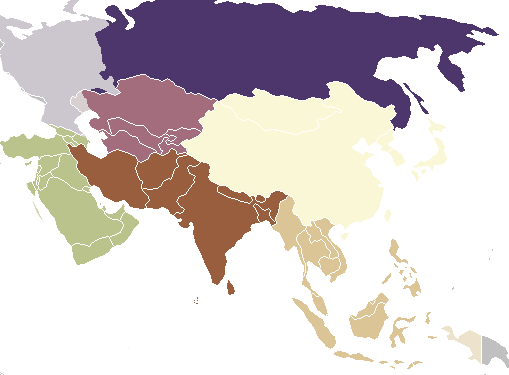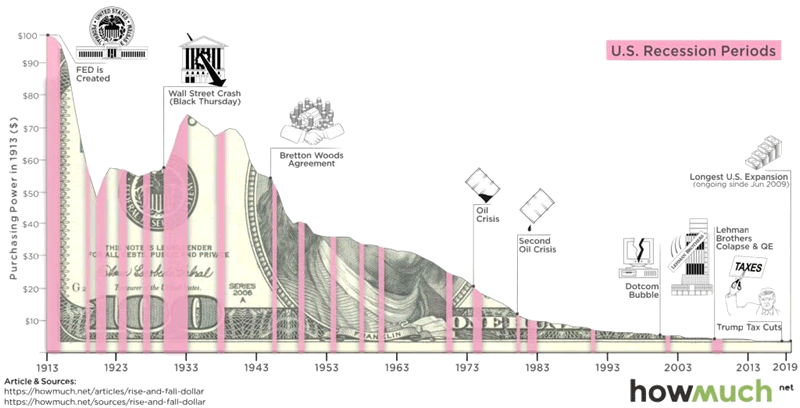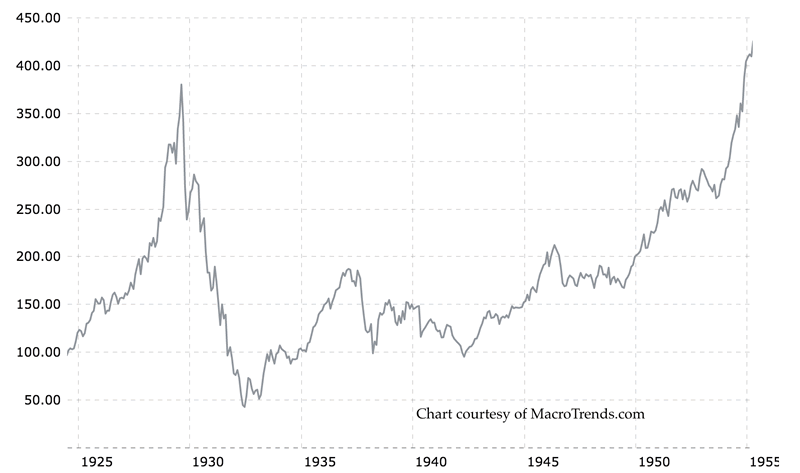What Makes this Gold Market Rally Different From All Others
Commodities / Gold & Silver 2019 Oct 10, 2019 - 01:53 PM GMT 1. It is led by institutions and funds, not private investors. Global quantitative easing created a huge and mobile pool of capital in constant need of a place to call home. As the need for a safe haven became apparent among the stewards of that capital, the demand for gold flourished. The consistent presence of funds and institutions as buyers in this rally, as represented by the growth in ETF stockpiles, is one of its hallmarks and represents one of the major differences between this gold rally and rallies of the past. Though private investors have been late to the game, the rapid development of the physical market for gold coins and bullion in the United Kingdom is testament to the fact that sentiment can change quickly.
1. It is led by institutions and funds, not private investors. Global quantitative easing created a huge and mobile pool of capital in constant need of a place to call home. As the need for a safe haven became apparent among the stewards of that capital, the demand for gold flourished. The consistent presence of funds and institutions as buyers in this rally, as represented by the growth in ETF stockpiles, is one of its hallmarks and represents one of the major differences between this gold rally and rallies of the past. Though private investors have been late to the game, the rapid development of the physical market for gold coins and bullion in the United Kingdom is testament to the fact that sentiment can change quickly.
2. Day-to-day price reversals often originate in Asia and Europe, not just the United States. For decades, the U.S. commodity markets set the tone for gold pricing and the rest of the world was content to follow. Even the old London price fix tended to follow along with trends established in the United States. That all changed when the Shanghai gold market began offering its own pricing mechanism and the effects of Brexit began to have a profound impact on both sides of the English Channel. Now, price reversals often begin in Asian or European markets overnight and carry over to the open in New York rather than the other way around. All of this is a reflection of ramped up global investor interest in gold and a leveling of the playing field in terms of who and what influences the price on a daily basis. As such, it comprises our second important difference between the current gold price rally and rallies in the past.
3. Central banks are buyers of physical gold, not sellers. In 2011 something unusual happened in the gold market. Central banks flipped from being net sellers of the precious metal to net buyers reversing a 40-year trend. Since then, the official sector has added 4,563 metric tonnes to their coffers (through the first half of 2019) – a 15% gain in stockpiles to 34,407 metric tonnes. The gold that central banks take off the market, though, is only part of the story. The rest has to do with how domestic production in two key producing countries – China and Russia (the world’s number one and three producers) – is treated. Both countries channel their mined metal into national reserves rather than selling it in the global marketplace. Many analysts see this new and evolving approach to gold reserves as the key difference between the present gold rally and rallies of the past.
4. Bullion banks are covering their shorts on price retreats, not piling-on. Declining global interest rates have put a damper on another traditional source of physical gold supply – bullion bank leasing programs. “We can conclude,” writes gold market analyst, Alasdair Macleod, in an insightful paper published at the GoldMoney website, “that the basis for highly geared interest rate arbitrage by borrowing gold is running into a brick wall. Not only is there no incentive for lessors but also there is also a diminishing appetite for lessees because the opportunities are vanishing. Synthetic gold liabilities are being gradually reduced, not only by ceasing the creation of new obligations, but by buying bullion to cover existing ones. This will have been particularly the case when the USD yield curve began to invert in recent months (itself a backwardation of time preference), and was the surface reason, therefore, that the gold price moved rapidly from under $1200 to over $1500.” This change in direction for bullion banks represents another fundamental difference between this rally in the gold price and rallies of the past. What’s more, given the entrenched low-rate environment, it looks like it might remain a factor for some time to come.
5. Yields in economically important parts of the world are negative, not positive. Negative interest rates are a reality in both the European Union and Japan, and Alan Greenspan said recently that it is “only a matter of time” before they spread to the United States. One of the arguments against gold over the years has been that it costs money to own it. Now it costs money to own euros and yen, and before too long it might cost money to own the dollar as well. The advent of negative rates is perhaps one of the more profound differences between this gold rally and rallies of the past. It might also prove to be the most enduring. “One of the reasons,” Greenspan added in that same CNBC interview, “the gold price is rising as fast as it is – you know, at $1500 a troy ounce . . . What that is telling us is that people are looking for resources they know are going to have a value 20 years from now, or 30 years from now, as they age and they want to make sure they have the resources to keep themselves in place.”
Gold and emerging markets

An alternative to the dollar
In a recent GoldHub interview, the former governor of the Reserve Bank of India, Duvvuri Subbarao, made some interesting observations with respect to emerging countries’ attitude towards gold ownership as a national reserve asset. “‘In the immediate aftermath of the crisis,” he says, “we had to sell dollars to prevent our currency going into freefall. During Quantitative Easing, we had to buy dollars to protect our financial stability. And when the Federal Reserve began to taper QE, exchange rates slumped again and we had to defend ourselves with our reserves. All these events prompted one obvious question – Is there an alternative to the dollar?” Subbarao, goes on to explain that if central banks cannot rely on the dollar for stability then they need to find it elsewhere. “Holding gold within our reserves,” he adds, “is an integral part of that self-defence.” As it is, we might add, for private individuals as well.
Households in India pile up 24,000 tonnes of gold
India’s Financial Express tells us that “Households in India may have piled up around 24,000-25,000 tonnes of gold, remaining the world’s largest holders of the precious metal,” according to the World Gold Council. . .At current prices, the value of that private stockpile amounts to over $1.1 trillion – “or equivalent of more than 40% of India’s nominal gross domestic product” for the year. To give you an idea just how much gold the people of India own in the overall scheme of things, the total amount of gold held by governments and central banks globally is 33,976 tonnes, according to World Gold Council statistics.
Russia’s huge gold stash is worth more than $100 billion
“The country [Russia] quadrupled gold reserves in the past decade as it diversified away from U.S. assets,” reports Bloomberg, “a move that has paid off recently as haven demand sent prices to a six-year high. In the past year, the value of the nation’s gold jumped 42% to $109.5 billion and the metal now makes up the biggest share of Russia’s total reserves since 2000.” Russia’s reserve gains via appreciation of the precious metal will not be lost on a whole host of other countries looking to move in the same direction.
Gold as a central bank reserve asset
In a recap on the year with respect to central bank buying, the World Gold Council reports: “In 2018, central banks bought more gold than at any time under the existing international monetary system. The vast majority of demand has come from emerging and developing country central banks. 19 individual central banks bought more than one tonne of gold in 2018, giving rise to total purchases of 651 tonnes. Even the European Union re-emerged as a net buyer, due to substantial purchases from Poland and Hungary.”
Market cycles will endure as long as humans exist
“Four of the most dangerous words in the investment world are ‘It’s different this time,’ writes Howard Marks in a Bloomberg opinion piece. “When people use them, what they’re saying is that the norms of the past no longer apply. . .Both these notions were soon shown to have been erroneous, and the market bubbles abetted by that optimistic thinking were popped, bringing on painful market crashes.”
Dr. MoneyWise says: “Old Ben Franklin said it best. ‘By failing to prepare, you are preparing to fail.’ And I will add, we do not know when the next crisis will begin, but begin it will. And when it does, only two kinds of investors will be there to greet it: Those who prepared and those who did not.”
The Rise and Fall of the Dollar Purchasing Power of the U.S. Dollar (1913-20190

Chart courtesy of HowMuch.net
“It’s no secret,” says HowMuch, “that $1 now will get you less than it would 100 years ago, but just how much has the purchasing power of the U.S. Dollar decreased over the years? To illustrate this, we created a visualization that demonstrates the rise and fall of the dollar since 1913. Using this graphic, we can see how inflation and changes in the Consumer Price Index have decreased the dollar’s purchasing power over the last century.
• $100 in 1913 would only be worth about $3.87 today.
• While the purchasing power of the dollar has gone up and down since 1913, it has never surpassed the purchasing power it had in 1913.
• The purchasing power of U.S. citizens has always topped the charts, but that could be changing in the future.
• Inflation impacts nearly all variables of macroeconomics, and many believe that current U.S. inflation levels are too low.”
Economic insecurity is becoming the new hallmark of old age
“In the United States,” writes Katherine S. Newman and Rebecca Hayes Jacobs for The Nation, “economic security in old age was seen, for a long time, as both a social issue and a national obligation. From the birth of Social Security to the end of the 20th century, the common assumption has been that we have a shared responsibility to secure a decent retirement for our citizens. Yet that notion is weakening rapidly. Instead, we have started to hear echoes of the mantra of self-reliance that characterized welfare ‘reform’ in the 1990s: You alone are in charge of your retirement; if you wind up in poverty in your old age, you have only your own inability to plan, save, and invest to blame.”

Some compare today’s stock market psychology to the period just before 2008. Others compare it to the 1920s when everything was hunky-dory until suddenly it wasn’t – perhaps a more apt comparison. Too many are “all-in” with respect to stocks in their Individual Retirement Accounts hoping to accumulate as much capital as possible without regard to the potential downside. The stock market did not recover from the losses accumulated between 1929 and 1933 until the mid-1950s, almost 25-years later – a fragment of stock market history lost to time.
Some will rely on the fact that stocks recovered nicely once the Fed launched the 2009 bailout. We should keep in mind though that many prominent Wall Street analysts have warned that the Fed no longer has the firepower it did then. The financial markets and economy are much more vulnerable as a result – all of which brings us back to the notions of self-reliance and taking personal responsibility for our retirement plans. If you find yourself among the group that thinks hedging a stock market downturn to be in your best interest, we can help you effectively structure a gold and silver diversification as part of your retirement plan to hedge that possibility.
NotableQuotable
“For their part, strategists at some of Wall Street’s biggest banks — including Citigroup Inc., JPMorgan Chase & Co., and Goldman Sachs Group Inc. — warn against expecting any truce in the upcoming round of U.S.-China trade talks.” – Chris Anstey, Bloomberg
“Ironically, the beggar-thy-neighbor implications of competitive devaluations will almost certainly incite a response from countries who may not originally even have needed to resort to currency debasement in the first place, raising the potential for full blown currency war. How should one position for such an endgame? As is probably evident, any nominal instrument will be devalued in real terms, so the solution is to hold an asset that maintains its real value – an asset that cannot be printed.” – Rick Rieder, BlackRock Funds
“At a conference in London this week Peter Spiller of CG Asset Management provided a nasty little example of the damage they [negative interest rates] can do. Imagine he said that you want to have an inflation-adjusted £1 for your retirement in 2068 (49 years away). You could look to achieve this perhaps by investing in a gilt that matures then. Right now, you would need to put in £2.60 for every £1 you get out. Why? Because that is the compounding effect of investing for 49 years on the miserable minus 2.05 per cent yield that the bond is offering investors today.” – Merryn Somerset Webb, Financial Times
“Put otherwise, the Fed is back where it was roughly a decade ago, effectively buying U.S. Treasuries from banks on an indefinite basis. But the difference this time? There’s no financial crisis in sight, just the uncomfortable fact that private capital markets once again need public support.” – Alexander Seady, Fortune
“We have a distinctive philosophy around gold. We believe gold has unique risk/reward characteristics that enable it to help preserve real value over the long term. We use gold as a potential hedge and do not speculate on its price over the next six to 12 months. We believe it is not possible to forecast the price of gold or, for that matter, the price of other investment assets. This, in fact, is why we have a potential hedge . . .” – Thomas Kertsos, First Eagle Investment Management, Gold Hub interview
“To implement MP3-type monetary policy will require very large fiscal spending and large budget deficits that will have to be funded by a) substantially increased taxes on companies and the rich, and b) the printing of money by central banks and the buying of the debts that are coming from the deficits. Typically, this has led to capital flight as investors seek to escape these things, which has quite often led to capital controls that are intended to keep capital in the country and the currency so that it can more easily be taxed and/or devalued.” – Ray Dalio, Bridgewater Associates
“Since no one really wants it, having the reserve currency is best viewed as a ‘curse’ not an ‘exorbitant privilege’.” – Mish Shedlock, MishTalk
“What people do not understand is that we are in a full-scale war with Iran today and have been for the past two years, but it is not a kinetic war except from their side. On our side, it’s a financial war. People need to stop thinking about financial sanctions as an extension of trade policy. This is warfare. It’s just a different form. . . . We may be getting close to regime change without firing a shot.” – James Ricard, Financial Sense interview
“There are now several geo-economic games of chicken playing out. In each case, failure to compromise would lead to a collision, most likely followed by a global recession and financial crisis.” – Noriel Roubini, Project Syndicate
“Legendary investor Warren Buffett’s much-quoted dismissal of the investment merits of gold is simple: the metal is ‘neither of much use nor procreative.’ But the Oracle of Omaha has got this wrong. Gold is constantly offering useful insights, if you look closely enough.” – Paras Anand, Financial Times
“Gold is real money. When fake money gets debased and inflated, gold shines. Since the beginning of this century, central banks have added some $22 trillion in new, fake money – or 15 times the value of all the gold ever mined from the time of The Flood to 2000 A.D.” – Bill Bonner, Bonner & Partners
“Currency devaluation aside, it makes a lot of sense to own assets which hold their value. Physical assets like gold, art and vintage wine all make for excellent hedges against currency devaluation. But it’s tough for major institutions or governments to buy enough art or wine to truly protect themselves. This leaves gold as the number one acquisition. It should come as no surprise that central banks have been very active in buying gold. Especially China’s…” – Martin Katusa, International Man
“Bloomberg terminals, the financial software system used by countless analysts and traders around the world, has a problem: its system cannot price callable bonds using negative interest rates. Programmers never considered such a scenario, and thus failed to code the system accordingly. So users get an error message when they attempt to force negative bond yields into their machines. . .’Under what scenario would anyone lend $1,000 to receive $900 in return at some point in the future?’” – Jeff Diest, Mises Institute (Negative Interest Rates are the Price We Pay for De-Civilization)
“What is amazing about this run-up in gold that we have seen is that it has taken place with the U.S. dollar actually quite firm.” – David Rosenberg, Financial Post interview
“I’ve been saying for years that central banks can never step away from this. They can threaten to. And they can bluff, and they can do some probing bets like they did last year, and the market may fall for that, or call that bluff in the short term. But yes I think we’re in a position now where central banks can never back away, which sort of begs the question how can this ever end. Can asset markets get inflated forever?” – Mark Spitznagel, Universa, Bloomberg interview
A word on USAGOLD – USAGOLD ranks among the most reputable gold companies in the United States. Founded in the 1970s and still family-owned, it is one of the oldest and most respected names in the gold industry. USAGOLD has always attracted a certain type of investor – one looking for a high degree of reliability and market insight coupled with a professional client (rather than customer) approach to precious metals ownership. We are large enough to provide the advantages of scale, but not so large that we do not have time for you. (We invite your visit to the Better Business Bureau website to review our five-star, zero-complaint record. The report includes a large number of verified customer reviews.)
By Michael J. Kosares
Michael J. Kosares , founder and president
USAGOLD - Centennial Precious Metals, Denver
Michael J. Kosares is the founder of USAGOLD and the author of "The ABCs of Gold Investing - How To Protect and Build Your Wealth With Gold." He has over forty years experience in the physical gold business. He is also the editor of Review & Outlook, the firm's newsletter which is offered free of charge and specializes in issues and opinion of importance to owners of gold coins and bullion. If you would like to register for an e-mail alert when the next issue is published, please visit this link.
Disclaimer: Opinions expressed in commentary e do not constitute an offer to buy or sell, or the solicitation of an offer to buy or sell any precious metals product, nor should they be viewed in any way as investment advice or advice to buy, sell or hold. Centennial Precious Metals, Inc. recommends the purchase of physical precious metals for asset preservation purposes, not speculation. Utilization of these opinions for speculative purposes is neither suggested nor advised. Commentary is strictly for educational purposes, and as such USAGOLD - Centennial Precious Metals does not warrant or guarantee the accuracy, timeliness or completeness of the information found here.
Michael J. Kosares Archive |
© 2005-2022 http://www.MarketOracle.co.uk - The Market Oracle is a FREE Daily Financial Markets Analysis & Forecasting online publication.




